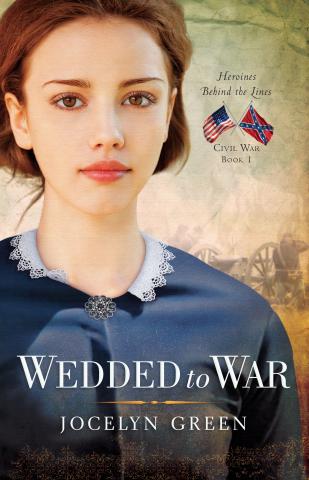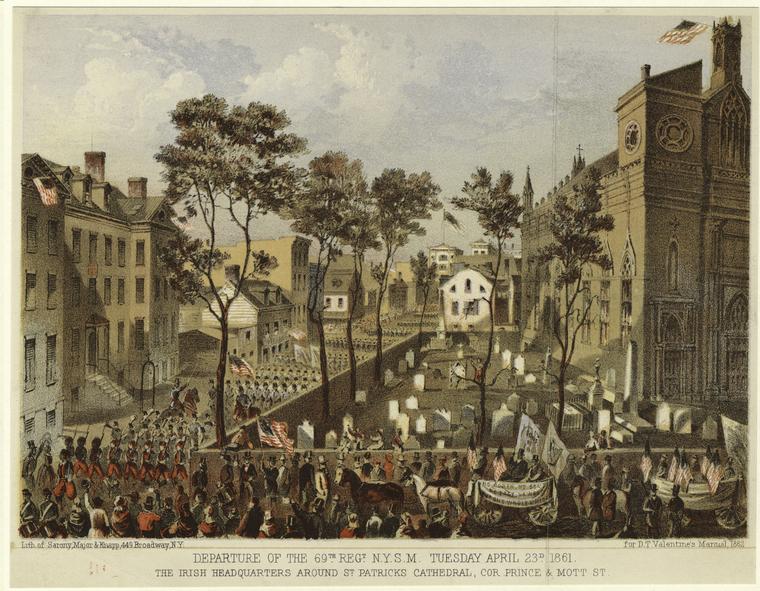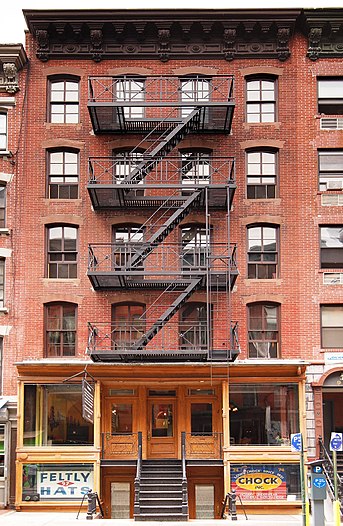
Monday, April 22, 1861 New York City When Charlotte and Alice told their mother they were taking the omnibus down Broadway, they weren't lying. They just didn't tell her where they would be getting off. There was simply no time for an argument today.
So begins Wedded to War--on one of the most famous and historic avenues in the world. In fact, many scenes in Wedded to War are set in locations you can still visit today. If you love history, this blog post highlighting some of them is for you. (Future blog posts will feature historic sites in Washington and Virginia, the other two "stages" for the dramas in Wedded to War.)
1) Broadway Since the book begins on Broadway, let's start there on our virtual tour, too.
 Broadway 1860
Broadway 1860
Today, Broadway looks nothing like the above photo, but it did have a few things in common: dirt, noise and crowds.
The avenue throbbed with life, like an artery coursing down the island of Manhattan. Ten days into the war, recruiting offices for the Union army had already cropped up along the avenue, their entrances clogged with eager young men. Between Canal Street and Houston, the street teemed with gentlemen in spats and ladies in silks, their musk colognes and lavender perfumes cloying on the warm breeze. The white marble facade of St. Nicholas Hotel between Broome and Spring Streets dominated the west side of Broadway. In front of The Marble Palace facing Canal Street, porters in their brass-buttoned, blue uniforms opened carriage doors and escorted their elite customers inside, where they would no doubt spend staggering sums on the latest Parisian fashions. ~Wedded to War
 Five Points
Five Points
A few blocks south and east of all this opulence was the world's most notorious slum--Five Points. (See a map of the area here.) The street names have changed in the last 150 years, and there is no discernible sign of the former poverty that marked this area. I don't really recommend making a special trip to see it. The illustration at right was made in the 1850s, and the one below, which was in Frank Leslie's Illustrate Newspaper, was published after the Civil War. Both are very similar to what the characters in Wedded to War saw and experienced.
If Broadway was Manhattan's artery, Five Points was its abscess: swollen with people, infected with pestilence, inflamed with vice and crime. Groggeries, brothels, and dance halls put private sin on public display. Although the neighborhood seemed fairly self-contained, more fortunate New Yorkers were terrified of Five Points erupting, spreading its contagion to the rest of them. This was where the Waverly sisters got off. ~Wedded to War
2) St. Patrick's Old Cathedral
When we first meet the character Ruby O'Flannery, she is outside St. Patrick's Cathedral on Mott Street, searching the Irish 69th Regiment for a glimpse of her husband Matthew. Here is what that scene may have looked like, below.

We also see Ruby revisit the cathedral later in the novel, but stay outside the fence for reasons I will not divulge here. :) Visitors to New York City can still visit this cathedral, which is now referred to as Old St. Patrick's, since there is a more recently constructed cathedral by the same name. This is what it looks like today (below).
After Ruby's visit to the cathedral, she returns to her tenement in the 14th Ward. If you're interested in tenement living, do check out the Lower East Side Tenement Museum. It chronicles the lives of residents over several generations, beginning in 1863, and looks fascinating! If I get back to the city, I will definitely go there myself! Directions to the Tenement Museum.
3) Bellevue Hospital
He offered her a cup of lemonade as if seeing each other again were the most natural thing in the world. As if a decade of silence between them made no difference whatsoever. "I'm just in town for some lectures on anesthesia at Bellevue Hospital this week. Two of the other doctors at Bellevue were invited to attend the ball this evening but one of them had to bow out when a patient began bleeding after surgery. . ." ~Wedded to War
Bellevue Hospital was a mere mention in the early part of Wedded to War, but without that lecture Dr. Caleb Lansing attended there, he and Charlotte would never have met at that ball just after the start of the Civil War. The hospital itself is America's oldest public hospital, and a magnificent piece of architecture. Take a look at what Dr. Lansing would have seen:

In order to serve more patients, the building was expanded in 2005, but the original facade of the old Administration Building wasn't torn down. Instead, it is preserved in a glass atrium.
For better photos, including some which showcase the hospital's impressive Christmas decorating, I highly recommend that you visit this blog post, from a New York movie location scout. He also tells us that inside the main entrance there is a neat exhibit on the hospital, which dates back to the 1700s, and a pamphlet you can take with you. (If you go, will you grab an extra one and mail it to me? Please?) Find maps, parking info and directions here.
4) Cooper Union
Charlotte sat on the edge of her chair at the association's Cooper Union headquarters, spine straight and feet flat on the floor, as if perfect posture even now might have a favorable bearing on her fate. ~Wedded to War
Cooper Union was the headquarters of the Women's Central Association of Relief, which grew into the U.S. Sanitary Commission, so this is where we find Charlotte Waverly in the excerpt above, waiting her turn to be examined by the medical committee about her suitability to become a nurse. Cooper Union, the tall building on the left in the illustration below, is an extremely historic building. To read more about its significance, visit this Web page.
The illustration below depicts the first meeting of the Women's Central Association of Relief inside Cooper Union. More than 4000 of New York City's women gathered here to organize volunteer efforts to aid the Union army. Out of this meeting, Dr. Elizabeth Blackwell gained support for her idea to train women nurses--a revolutionary idea at the time. What an incredible moment in history! I would have loved to have been there.
By the way, Dr. Blackwell's New York Infirmary for Indigent Women and Children is now New York Downtown Hospital. Not really worth a sightseeing visit, but if you're interested in the history, check out this bio on Dr. Blackwell, who plays a major role in my novel.
But back to Cooper Union. Below you'll see it as it stands today. Find a map to this building here.
5) Central Park Central Park, the first public landscaped park in America, is important in Wedded to War. Completed in the 1850s, it's Charlotte Waverly's favorite spot in New York City. Irish immigrant Ruby O'Flannery has a different attitude toward the park since she and her family were evicted from their neighborhood (Seneca Village), a community of African American and immigrant citizens, so the land could be appropriated for Central Park. Landscape architect Frederick Law Olmsted became the executive secretary of the U.S. Sanitary Commission for the first two years of the Civil War, proving his administrative genius and saving thousands of lives. The historical figure Olmsted plays a major role in Wedded to War. Click the image below to see Olmsted's map of Central Park much larger. (Then click that image again to zoom in even further, if you like.)
 Present Day Central Park
Present Day Central Park
The image at left shows Central Park today. Visit the Web site of Central Park, which has maps, events, and other information. They also have a page to show you the Site of Seneca Village.
This concludes the Wedded to War Historic Sites of New York City tour! If I find more, I'll add them. But my next project will be the Wedded to War Historic Sites of Washington! Wondering what Wedded to War is all about? Click here for an overview and book trailer.








Comments
Add new comment